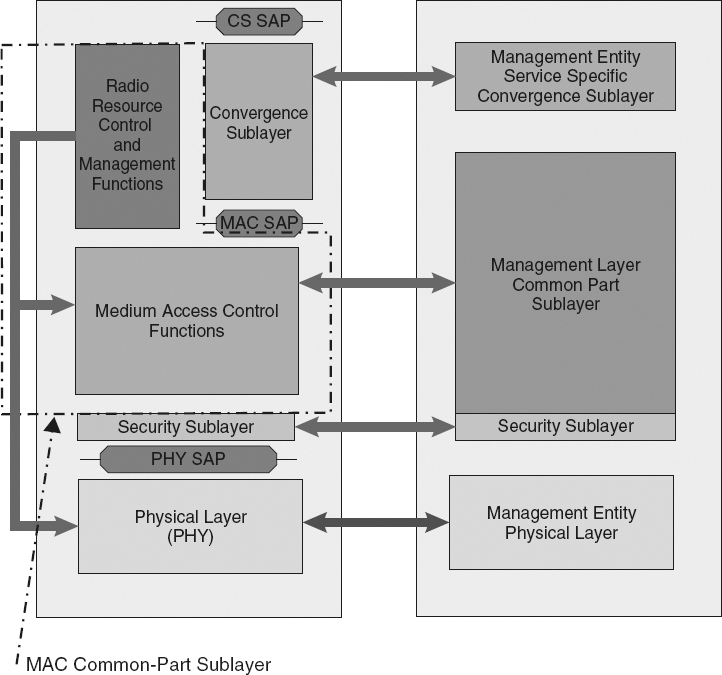Summary of Functionalities
This part focuses on the elements and functionalities in IEEE 802.16, both Legacy and Advanced, that dictate access network's operation. In what follows, we provide a detailed description of the different chapters and highlight—where applicable—certain features that characterize the IEEE 802.16 and its evolution.
Frame Structure
For both the Legacy and the Advanced IEEE 802.16, the details are provided for an OFDMA frame structure in both duplexing modes, that is, TDD and FDD. Descriptions for the frame structure operating in both the PMP and the MR modes are also provided. These details and descriptions are discussed in Chapter 4.

Figure 3.6 The IEEE 802.16m System Reference Model. Reproduced by permission of © 2009 IEEE.
The amalgamated IEEE 802.16-2009 document maintains the IEEE 802.16e descriptions2, allowing for different frame durations. In IEEE 802.16, the BS is the network entity generating the frame, and the one that assumes control of the frame's content for PMP operation. In the MR case, some control can be delegated to the RS, specifically, the ntRS mode where a RS can generate its own frame playing the role of a BS for all MSs associated with it. However, a tRS is always controlled by its superordinate BS. In this case the BS generates an access area and relay area in a frame.
To ensure backward compatibility with the IEEE 802.16-2009 frame ...
Get LTE, LTE-Advanced and WiMAX: Towards IMT-Advanced Networks now with the O’Reilly learning platform.
O’Reilly members experience books, live events, courses curated by job role, and more from O’Reilly and nearly 200 top publishers.

